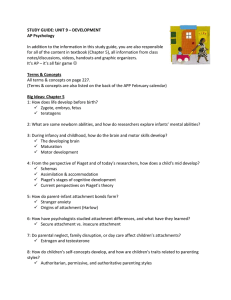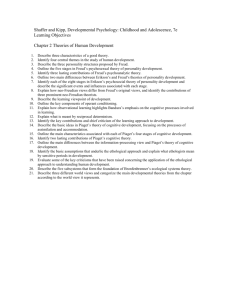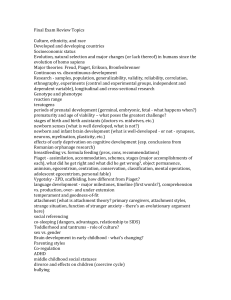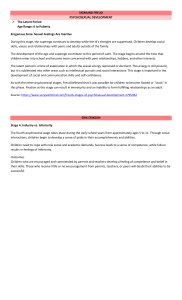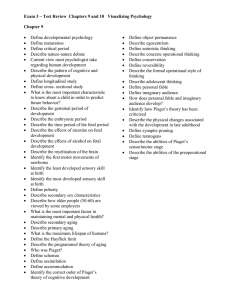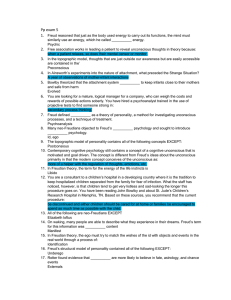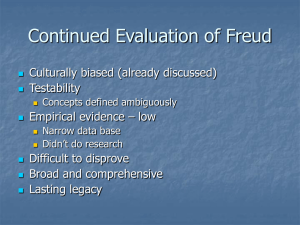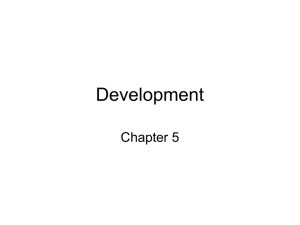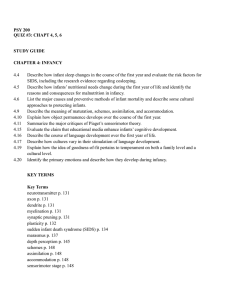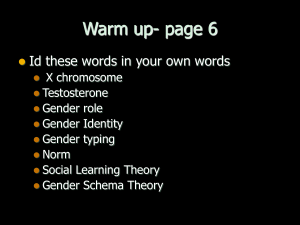development
advertisement
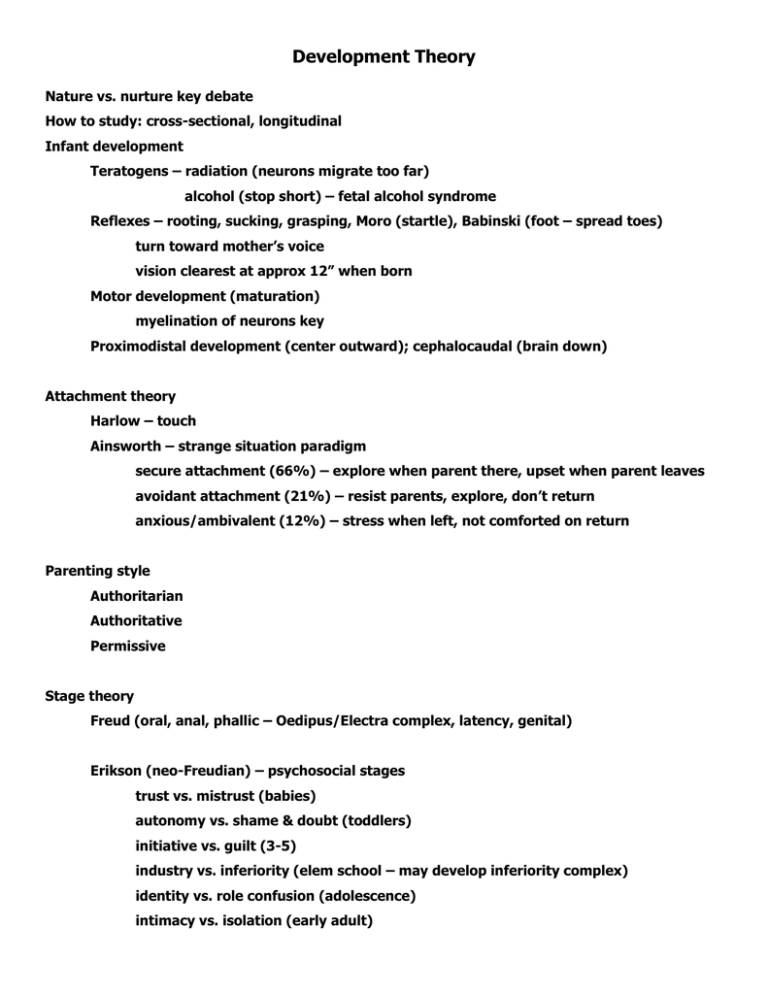
Development Theory Nature vs. nurture key debate How to study: cross-sectional, longitudinal Infant development Teratogens – radiation (neurons migrate too far) alcohol (stop short) – fetal alcohol syndrome Reflexes – rooting, sucking, grasping, Moro (startle), Babinski (foot – spread toes) turn toward mother’s voice vision clearest at approx 12” when born Motor development (maturation) myelination of neurons key Proximodistal development (center outward); cephalocaudal (brain down) Attachment theory Harlow – touch Ainsworth – strange situation paradigm secure attachment (66%) – explore when parent there, upset when parent leaves avoidant attachment (21%) – resist parents, explore, don’t return anxious/ambivalent (12%) – stress when left, not comforted on return Parenting style Authoritarian Authoritative Permissive Stage theory Freud (oral, anal, phallic – Oedipus/Electra complex, latency, genital) Erikson (neo-Freudian) – psychosocial stages trust vs. mistrust (babies) autonomy vs. shame & doubt (toddlers) initiative vs. guilt (3-5) industry vs. inferiority (elem school – may develop inferiority complex) identity vs. role confusion (adolescence) intimacy vs. isolation (early adult) generativity vs. stagnation (middle adult) integrity vs. despair (older adult) Piaget (cognitive devt – worked for Alfred Binet) schemas – assimilation – accommodation sensorimotor (0-2 years) object permanence (8 mo.) preoperational (2-7) concrete operational (8-12) conservation signals onset volume, area, number formal operations abstract reasoning, testing hypotheses Information-processing model – alternate view to Piaget changes reflect different way of processing info Moral development – Kohlberg Preconventional Conventional Postconventional universal ethical principles Carol Gilligan’s criticism – women think relationally, situationally Gender differences Biopsychological theory ex. women have larger corpus callosum Psychodynamic theory (Freud) Social-cognitive theory Social influences Gender-schema theory
